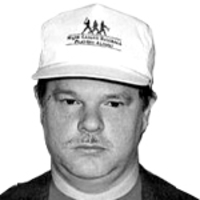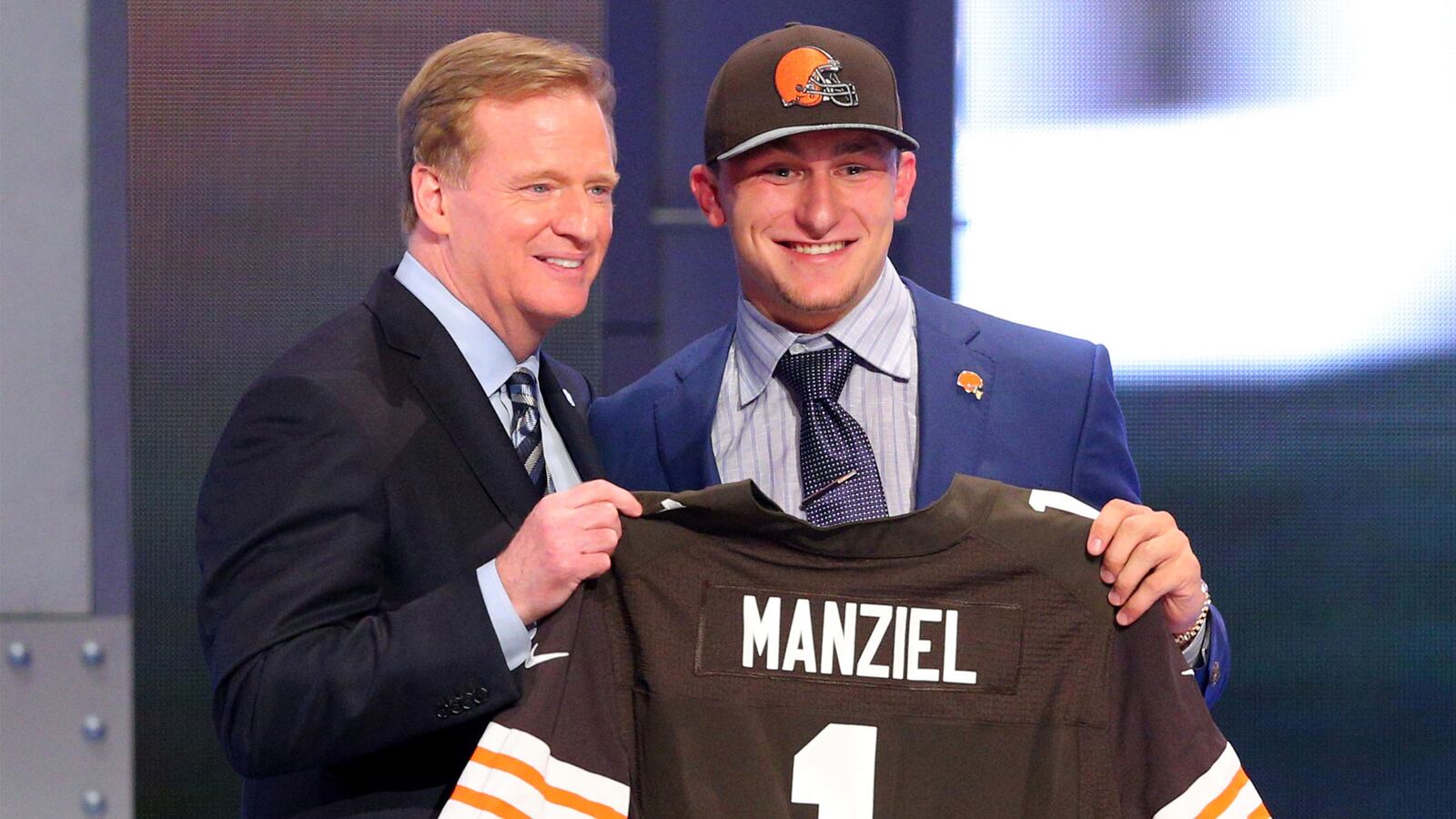Johnny, we hardly knew ye.
After just two seasons—and not full seasons but 15 total games—the Cleveland Browns released Johnny Manziel. The media, who had disliked Manziel while he was still in college, reacted with predictable snarkiness”: “Johnny Be Gone” (ABC News), “Johnny Manziel Doesn’t Deserve Another Chance in the NFL” (USA Today), and, of course, the New York Post: “Browns Cut Johnny Manziel, Officially a Loser.”
It isn’t exactly as if Johnny Football went out of his way to endear himself to the press and public. But it could have been so different.
Before Manziel had finished his first season of college football at Texas A&M, he was practically a household name. Many observers were already calling him the greatest quarterback in college football history—if that seems a bit much, consider that he might have been at least the most exciting football player that the game, pro or college, had seen in decades.
A lot of QBs have been called “the greatest” over the years, and in the past few seasons Heisman Trophy winners Tim Tebow and Cam Newton had that accolade dropped on them. Ah, but Manziel really was the greatest.
As a freshman in 2012, and in his sophomore season the following year, he was absolutely phenomenal. No one ever combined the ability to throw and run like Johnny Football. In the Southeastern Conference, undisputedly the toughest league in college ball, Manziel threw for 63 touchdowns (against just 22 interceptions) and ran for 30 more. He averaged an eye-popping 9.1 yards per throw.
In his freshman year alone, he ran for 1410 yards, more than many Heisman Trophy-winning running backs. And the truly amazing part is that he did it against defenses that were keyed to stop him. In 2012, on national TV, he led Texas A&M to a stunning 29-24 upset of number one-ranked Alabama on their own home field, taking hits, dodging tacklers, and making big play after big play against college football’s best defense. It was the game that made him the favorite for, and eventually won him, the Heisman Trophy. (How much of an achievement was that? Well, Alabama went on to win the national championship.)
Really, he should have won the Heisman two years in a row as he was even better in 2013, passing for 408 more yards and 11 more TDs. But by then he as already starting to alienate sportswriters with his selfish and immature behavior.
That side of Manziel didn’t come out right away. Still, even before his first college game for A&M, Johnny had been arrested and charged with three misdemeanors, including disorderly conduct. By 2014, stories of his drinking, reckless driving and all-night partying caused some to call him “undraftable” and “the most polarizing athlete in the country.” Barry Switzer, former coach of the Oklahoma Sooners and the Dallas Cowboys and probably the most fined and censured coach of his era, called Johnny “an arrogant little prick.”
Not only did Manziel fail to win the Heisman that year, he didn’t finish in the top four, with the trophy going to Florida State’s Jameis Winston.
How much did Heisman voters not like Johnny? Winston’s reputation was still reeling from sexual assault allegations. Manziel, on the other hand, had been accused of nothing more serious than selling his autograph. The NCAA gave up trying to prove that he had received money for the signed photos for reasons that remain murky; suffice it to say that Johnny’s parents had plenty of money to bring in some good ol’ Texas lawyers and stand up to the NCAA in a way that previous players accused of similar offenses, all of them blacker and poorer than Manziel, could not. Score one for the entitled brat who, to borrow Bill Russell’s famous phrase about college athletes, “had been on scholarship since the eighth grade.”
When you’re as talented as Manziel and have so much success so early, you don’t have to listen to anyone’s advice, and God knows Johnny didn’t. The entire world (including, Texas papers reported, his mom and dad) cautioned him not to leave college before he had even finished his junior year. Manziel went in the first round, took the money and ran, signing a four-year deal with the Cleveland Browns in a total package worth more than $8 million, including a signing bonus in the neighborhood of $4.3 mil.
The 2014 NFL season hadn’t started yet when Manziel earned his first NFL fine on August 22 for flipping the bird at an obnoxious Washington Redskins fan (according to one Cleveland player, he bragged that he would pay the $12,000 with “pocket money”).
From there, it was one long string of bad headlines for offenses such as losing his temper with an autograph-seeking fan at the AT&T Byron Nelson golf tournament, where he threw a water bottle in anger (in Johnny’s defense, the bottle hit a wall and not the heckler) It seemed like no week in the 2015 season went by without a story of Manziel being pulled over by a cop for fighting with his girlfriend or being demoted to third string after a video hit the Internet showing Johnny fighting for his right to party, a party he had lied to the Browns’ front office that he didn’t attend.
On January 2 of this year, he was spotted at Las Vegas’ Planet Hollywood Casino. Worse, he was wearing a wig, a fake mustache and calling himself “Billy.” (He blew it when he tab came and he tried to charge it to his room; finally, he had to pay with his credit card.) He missed a mandatory appointment on Sunday morning at the team's facility In Ohio as part of his concussion protocol.
Four days later, his marketing agency dropped him. The day after that, his agent dropped him, too.
In truth, Manziel should have dumped the agent when he allowed him to be signed by the Browns, perhaps the most laughingly inept franchise in the NFL. (If nothing else, he could have used baseball as leverage for some kind of trade to a better team as the Texas Rangers had drafted Manziel as a shortstop. John Elway and his agent engineered a similar bluff in 1983 when he was drafted by the horrendous Baltimore Colts and the New York Yankees. Elway ended up playing his entire career with the Denver Broncos, winning two Super Bowls. )
In hindsight, no one on the Browns—neither Coach Mike Pettine, who suffered through two losing seasons including a 3-13 record last year before being fired, nor anyone in the front office—seemed to perceive Manziel’s behavior as one long as cry for help. And being white and coming from a wealthy family didn’t earn him much sympathy from the press.
Still you might have thought that someone would have put his arm around Manziel’s shoulder and suggested he check into a rehab center before he did it himself on February 3 of this year. It should be noted that that was four days after, he was accused of domestic violence by a girlfriend in Dallas, a case which is currently under review by a grand jury.
It would probably be a good idea for Johnny Manziel to take a year off. He is, after all, just 23 years old, and he has to deal with the alcohol problem before he returns to throwing footballs for money. But should he attempt to make a comeback in the future, he could certainly make for an inspiring story.
True, he has exhibited no substantial moral qualities so far in his young life, but he hasn’t killed anyone—yet, at least. Now that he’s been given his release, he’s free to seek out a strong father figure type of coach who could find something worthwhile in his character and nurture it—you know, a Bear Bryant type. Bryant took on potential reprobates such as Joe Namath and Kenny Stabler, and they went on to win Super Bowls.
Of course, Bear Bryants are in short supply, but they’re not impossible to find if you look closely. Bryant, after all, once said “Don’t ever, ever, give up on talent.”






